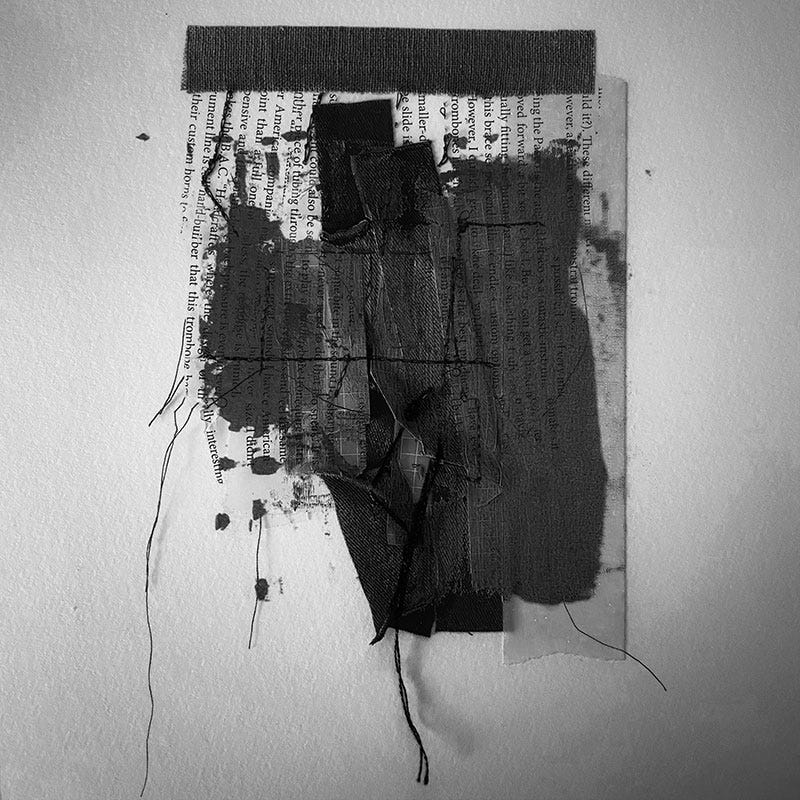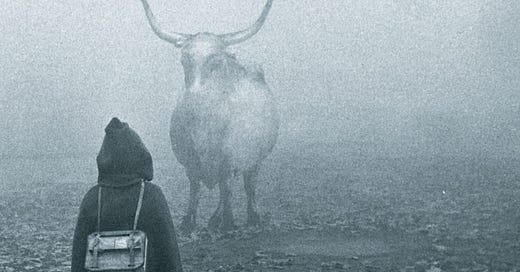Hal Willner was a man possessed by a very specific type of genius, one that was perfectly suited to his home city of New York, and to the music industry when it was at its creative peak, with its commercial peak coming up swiftly behind. Had he been alive at any other time, he would have done something entirely different with his life, because there was no such thing as the job he had until he created it by burrowing into an industry that didn’t exist in the form that could sustain him and his peculiar ideas until the 1970s.
What Willner did — outside of his day job, which was serving as the sketch music producer on Saturday Night Live from 1980 to 2020, ’cause we all gotta pay the rent — was make weird hipster (in the pre-millennial sense of that term) records. He worked with artists like Leon Redbone, Marianne Faithfull, Allen Ginsberg, William S. Burroughs, and, um, Joe Piscopo. But he also produced the aptly titled A Well Kept Secret, a brilliant jazz album by drummer Beaver Harris and pianist Don Pullen, with tenor saxophonist Ricky Ford, baritone saxophonist Hamiet Bluiett, bassist Buster Williams, and steel drum player Francis Haynes. And he produced most of saxophonist David Sanborn’s Another Hand, which featured guitarists Bill Frisell and Marc Ribot, and bassists Charlie Haden and Greg Cohen, and included versions of songs by Haden, Lou Reed, and Terry Adams of NRBQ. Willner had big ears and could take artists in unexpected directions that made perfect sense when you listened back afterward.
He was also the mind behind Night Music, an amazing late-night TV show, hosted by Sanborn, that ran for a couple of years in the late ’80s. A mind-boggling range of brilliant artists, from Miles Davis to Eddie Palmieri to Sonny Rollins to Sonic Youth to the Residents, would perform, and at the end of each week’s show, they’d be paired off or combined in surreal, thrilling one-off encounters: Rollins soloing behind Leonard Cohen, or the Residents dancing behind Conway Twitty. Watching clips from the show on YouTube, it still feels like you’re dreaming it, that it couldn’t possibly have really happened like that, not on network television. But it did.
Willner’s most famous works, though, were a string of tribute albums on which he would gather a parade of artists that nobody else would even imagine on the same record, never mind the same song — Tom Waits, the Sun Ra Arkestra, Carla Bley, Wynton and Branford Marsalis, Elvis Costello, Deborah Harry, Jaki Byard, Bill Frisell, Dr. John, John Zorn, Peter Frampton, Sting, Lou Reed, and on and on — and have them interpret the music of Nino Rota, or Thelonious Monk, or Kurt Weill, or songs from Disney movies. Amarcord Nino Rota, That’s the Way I Feel Now: A Tribute to Thelonious Monk, Lost in the Stars: The Music of Kurt Weill, and Stay Awake (Various Interpretations of Music from Vintage Disney Films) were all brilliant records that caused you to hear both the performers and the material in entirely new ways. The fifth in the almost-a-series came out a little over 30 years ago, on September 29, 1992, and it’s always been my favorite because it absolutely lives up to its title: Weird Nightmare.
For this album, subtitled Meditations on Mingus, Willner assembled a group of performers somewhat different from those on previous albums. It was more focused, more like one cohesive thing than its predecessors, which had a box-of-chocolates quality. High-profile rock musicians were largely absent; instead, he put together a core band of jazz and avant-classical players including trombonist Art Baron, bassist Greg Cohen, and percussionists Michael Blair, Don Alias, and Francis Thumm. They were joined on various tracks by Henry Threadgill, Bill Frisell, Geri Allen, Don Byron, Gary Lucas, and Vernon Reid. This allowed him to turn most of the album into a single extended work, tracks bleeding into each other and sustaining an ominous, hazy mood. There was an unsettling quality to the slow, drifting music, particularly since some of the percussionists were playing the unearthly, abstract percussive instruments built by composer Harry Partch.
One of the few tracks that stood apart from the others was a version of “Oh Lord Don’t Let Them Drop That Atomic Bomb On Me,” which was almost a Rolling Stones B-side, as it featured Keith Richards on guitar and vocals and Charlie Watts on drums, with their touring vocalist Bernard Fowler, pianist Chuck Leavell, and tenor saxophonist Bobby Keys also present, along with Cohen on bass and the Uptown Horns (Hollywood Paul Litteral on trumpet, Bob Funk on trombone, Crispin Cioe on alto and baritone saxes, and Arno Hecht on tenor sax).

Though most of Mingus’s best music was instrumental, Willner found work for multiple guest vocalists. Elvis Costello sang “Weird Nightmare” and Diamanda Galás appeared on “Eclipse,” moaning and keening in the background while Leonard Cohen read Mingus’s poem “The Chill of Death,” while many other notables, including Henry Rollins, Robbie Robertson, Chuck D, Dr. John, and Hubert Selby Jr., read excerpts from Mingus’s autobiography Beneath the Underdog and other writings over versions of compositions like “Canon,” “Purple Heart,” and “The Shoes of the Fisherman’s Wife are Some Jive Ass Slippers.”
When I interviewed Don Byron for the BA podcast, I asked him about working on this album. You should listen to the whole thing, but his memories of Willner were… very interesting.
“Man, he was just off getting high,” Byron told me. “He didn’t really do anything. He would just get a lot of really good musicians together and just throw you in the pit, you know? One of the tunes that I played on, I wrote the charts for everybody to read. ’Cause he just said, ‘Why don’t we play such-and-such?’ Nobody had a chart for it. So it was kinda like that. If you get a whole bunch of famous rock guys and you throw ’em together with a whole bunch of famous jazz guys, you throw ’em together with this and you throw ’em together with that, you will get something. You know, you have to have a big budget to make those kind of records, ’cause there’s a lot of tape rolling, not knowing what’s gonna happen kind of thing. And that’s really what I remember. But he didn’t — I mean, all I remember about him the days that I was there was he was just there getting high. He was a guy that facilitated a lot of shit. ’Cause he knew people, he had access to money, he could make certain kinds of things happen. I mean, just having those Harry Partch instruments around, you need to be on the inside to make some shit like that happen.”
People will often describe albums that are just slightly off-center as sounding like nothing else out there. They’re usually exaggerating. Weird Nightmare, though, really is like nothing else. It’s unsettling, beautiful in a clanging and dissonant way (Robert Quine’s noise guitar solo on “Pithecanthropus Erectus” is like having someone install braces on your teeth just so they can yank them off again, and that’s before he somehow manages to throw in an allusion to the electric sitar on Miles Davis’s On the Corner for no goddamn reason at all), and it makes you feel like you’ve slept too long, and now you’re half-awake and vaguely feverish, plagued with ominous dreams you can’t fully recall, but trying gives you the shivers. Most of Willner’s tribute albums are available on streaming services, though Amarcord Nino Rota and That’s the Way I Feel Now are not. So dive in, but when you approach Weird Nightmare, give it the time and space to really sink into your psyche. And think about the glory days of the music business, when projects like this could exist because people were willing to just throw money at them regardless of commercial potential.
There was a documentary made about the album, directed by Ray Davies(!), which Roz of Milner on Music (I subscribe, and you should too) pointed me to. Here it is:
Before I go, a few notes:
• I’ve finished the second chapter of In the Brewing Luminous: The Life and Music of Cecil Taylor, which will be published by Wolke Verlag in spring/summer 2024. You can read an excerpt from it by becoming a Patreon supporter.
• I contributed to this New York Times roundup of writers and artists (Kamasi Washington, Nubya Garcia, Shabaka Hutchings and James Brandon Lewis are all heard from) paying tribute to Ornette Coleman, and was shocked to be the only person repping for Prime Time!
• My latest jazz column for Stereogum features a long interview with bassist Eric Revis and reviews of new albums by The Bad Plus, Dave Douglas, and more. Read it here.
• I reviewed another bunch of albums for Shfl this week, including Junkyard, the Four Horsemen, W.A.S.P., David Lee Roth, and a bunch by AC/DC; here’s the link.
• If you haven’t read my book Ugly Beauty: Jazz in the 21st Century, which came out in February, it’s available everywhere. Here’s an Amazon link.
That’s it for now; see you next week!





Amazing album. I really appreciate your introduction.
RE: That’s the Way I Feel Now. Availability aside it is worth noting the CD release dropped a handful of tracks that appear on the LP.